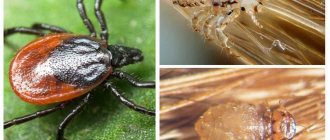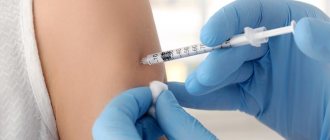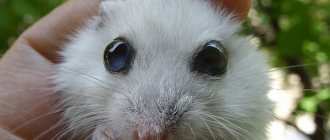Some owners of these cute rodents, unfortunately, are faced with such a disease in their pets as a tumor. Not everyone understands that a tumor in a hamster can be cancer.
Reference. In pets under the age of one year, this disease is extremely rare, but individuals older than two years are susceptible to cancer.
A tumor is not always oncology
The diagnosis must be made by a qualified specialist in a veterinary clinic, but not everyone has the opportunity to get an appointment with a veterinarian. A preliminary conclusion can be made based on the localization of the formation:
- if the hamster has a lump on its neck, it may be an inflammation of the lymph node;
- a tumor on the abdomen in most cases is a neoplasm of the mammary gland;
- swelling of the cheek and swelling of the muzzle suggest a problem with the teeth or cheek pouches;
- swelling on the head, forehead or back may be the result of a hamster fight or other injury.
When examining the animal, you should remember the location of the marker glands in males, which are often mistaken for a sore.
In the Djungarian hamster it is located on the stomach, yellowish and covered with crusts. The Syrian hamster has two of them, symmetrically on the sides, in front of the hind legs. They look like a black oval bald spot. This is a normal anatomical formation, and there is nothing to treat here, but observation will not be superfluous: inflammation or neoplasm of the scent gland is often recorded in hamsters.
Growths in the ear are also not always a malignant tumor. In hamsters, otitis media (inflammation) of the middle ear can be accompanied by cyst-like tissue growth. In this case, the growths are filled with pus, and an unpleasant odor comes from the ears. Treatment is antibiotics locally and systemically, but otitis media often recurs again and again without being completely cured.
Hamsters can suffer from papillomatosis , a viral infection that causes the formation of dense warts of a characteristic appearance on the skin due to the accelerated growth of the epithelium.
Papilloma rarely has to be removed surgically: it is a benign formation, and when the body copes with the virus, self-healing may occur.
Preventive measures
As a preventative measure to reduce the risk of disease, it is recommended:
- Clean and wash the cage frequently.
- Proper nutrition (elimination of fatty and dangerous foods from the diet, introduction of vegetables and herbs).
- Avoid frequent mating. Childbirth undermines the body's defenses in females.
If tumors are detected, do not self-medicate, but visit a specialist for a full examination.
Tumors are a fairly common disease in hamsters; they prevent the pet from living a full life: moving, eating, sleeping. With age, the risk of neoplasms increases; it is also worth noting that females suffer from this problem more than males.
Tumors are:
- Benign
. If you press lightly on them, they will move under the skin; they do not adhere tightly to the tissue, so they can be removed surgically. The structure of the tumor can be different: they can be soft, hard and even feel like cartilage; - Malignant
. Often adjacent tissues are affected; symptoms in hamsters appear mostly late, when the tumor has already spread to adjacent organs. When diagnosed with cancer, the rodent is euthanized.
Benign tumors are mainly localized on the abdomen, armpits and groin. Head tumors are less common: the animal behaves atypically, its limbs are tense, and coordination of movements is impaired. Malignant tumors are often located in hard-to-reach places and pose a serious threat to the life of a rodent. If they begin to affect internal organs, it is more humane to euthanize the hamster.
The nature of the appearance of tumors is still not clear: this may be due to heredity, decreased immunity, mechanical injuries, and hormonal imbalances.
Abscess in a hamster
As a result of fights or other injuries, purulent inflammation may occur, which looks like a limited swelling. The lump on the side may well be an abscess rather than cancer. At first it is hard and painful, and the skin is red and hot to the touch. Then the tumor softens and fluctuation appears. Hair may fall out. At the final stage, the abscess spontaneously opens and a wound appears from which pus flows.
For an abscess in a hamster, treatment involves the use of systemic antibiotics (Baytril 2.5% subcutaneously 10 mg/kg body weight). Surgical treatment of the wound is necessary: opening the abscess, cleaning the cavity and washing with an antiseptic. The wound is washed every day and protected from re-infection.
If the abscess is not treated properly, the process becomes chronic and a fistula appears, which will be difficult to heal.
Other neoplasms
Hamsters are very active animals. Sometimes, if they jump unsuccessfully, they can damage their limbs. Careless handling of your pet can also lead to fractures, dislocations or bruises. If a tumor is detected on the paw, it is necessary to visit a veterinarian and examine the rodent to make sure whether the tumor is caused by an injury or a virus that causes the growth of bone tissue (osteosarcoma).
During the inflammatory process, a purulent cavity may form in the animal. An abscess in a hamster usually appears after fights or other injuries. It is accompanied by redness of the skin and painful sensations, and hair may fall out. At first the tumor is hard, but after the appearance of pus it becomes soft. As a treatment, the abscess must be opened and treated to avoid infection.
Tumor on a hamster's cheek
A special case of an abscess is inflammation of the cheek pouch, the most likely reason that a hamster has a swollen cheek. Injury occurs from the inside, with a sharp object or unsuitable food: wood chips, dry pasta, seeds and nuts in shell, hay. The wound gets infected and fester occurs.
When your pet's cheek is swollen, it is better not to hesitate to visit a doctor. Purulent inflammation spreads to the surrounding tissues, and next to the cheek there are the most important structures: the eyes, ears and brain. The pain does not allow the baby to eat, and the animal quickly weakens.
If the animal's cheeks are swollen symmetrically, they should be gently massaged towards the muzzle. Then the hamster will reflexively throw out the contents of the cheek pouch, and it will be clear whether there is a problem. If the seal is preserved, the contents are checked by pulling back the edge of the lips with your hand or a stick and at the same time pressing on the cheek under the ear. This must be done while firmly holding the hamster and trying not to damage the mucous membrane.
Sometimes it makes more sense to treat a swollen cheek in a clinic setting under anesthesia. The doctor will be able to completely turn out the cheek pouch, remove foreign objects, rinse with an antiseptic (an aqueous solution of furatsilin, chlorhexidine), open the abscess and empty the cavity of pus.
When a hamster has a bump on its cheek, in addition to the cheek pouches, the doctor must check the animal’s bite.
Rodents' teeth grow throughout their lives and should be worn down normally. If this does not happen, the molars grow excessively - this is called malocclusion.
For dental problems:
- loss of appetite (or complete refusal to eat);
- discharge from the nose or swollen eye;
- abscess on the cheek, swelling.
If the length of the teeth is not adjusted, the hamster will die.
A tumor in a hamster’s neck can also indicate an inflammatory process in the oral cavity - then the nearest, “barrier” lymph node enlarges and looks like a hard lump in the area under the lower jaw. Lymph nodes also enlarge with a systemic infectious disease.
What to do if your hamster has a swollen paw
If your pet's paw is swollen, then the first thing to suspect is a closed fracture of the hamster's paw.
An accurate diagnosis can be obtained by taking an x-ray using a good quality digital device. True, this is more of a scientific interest - neither surgery nor a cast will be performed in a veterinary clinic, only complete rest is prescribed.
What to do if your paw is swollen and the cause is unknown:
- Place in a small carrying container with solid walls without rods.
- Use paper towels instead of bedding.
- Dosed, complete feeding, monitor the presence of appetite.
- Examine the animal, checking whether a wound has appeared on its paw. Sometimes, even with open fractures, sticky hair makes it difficult to see the wound. If the animal fought with a relative, or was otherwise injured, the lump on the paw may turn out to be an abscess. Then the abscess sooner or later opens up, and it is treated like an open wound, washed daily with an antiseptic.
In the worst case scenario, the tumor on the paw turns out to be osteosarcoma . This is a malignant oncological disease that progresses rapidly and cannot be cured.
Over time, the paw is no longer visible; the entire limb is a tumor mass that spreads to the body of the animal. Osteosarcoma is more common in older animals (1-2 years).
Why does a hamster have big testicles?
After the male reaches puberty, inexperienced owners begin to sound the alarm, figuring out what to do if the hamster’s testicles are too large. But large testes relative to body size in rodents are a common occurrence. In a Syrian hamster, they become noticeable (a pair of tubercles in the lower abdomen) at the age of 2 months, and after another month the hair on them thins out and you can notice that the testicles have greatly enlarged. Hamsters can have unilateral cryptorchidism - when one testis descends into the scrotum, and the second remains in the abdominal cavity. Then the swelling in the tail area will be one-sided.
Consider the possible reasons why your hamster's testicles are swollen.
Puberty
When the animal is ready to reproduce, seminal fluid accumulates in the testes. Often, a “tumor on the butt” of a young Dzungarian male turns out to be a man’s penis of normal size.
Hormonal disbalance
Most often, when keeping males and females in the same room (but in different cages).
Inflammatory process
Red and hot skin on the testes, signs of pain are signs of infection, orchitis. Treatment is carried out with antibiotics, but not always successfully.
Oncology
There are both benign and malignant testicular tumors (seminoma). Regardless of the type of formation, the only treatment is removal of the affected organ (castration) under general anesthesia. Oncology is characterized by a one-sided lesion, in contrast to orchitis.
Causes of seals
It is very sad when a small creature develops tumors. Moreover, they can be of different sizes - from a barely noticeable bump to a huge tumor. Veterinarians say that female Djungarians suffer from this disease much more often than males and representatives of other breeds. This is associated with their reproductive characteristics.
In general, their susceptibility to diseases is quite serious; they suffer from viral diseases more often than other breeds. Scientists have long put forward a viral theory of cancer; perhaps it extends to small rodents. The question of what provokes the occurrence of tumors in hamsters has not yet been fully clarified.
However, the reasons for compaction on the body of small animals may be:
- bruises and fractures;
- local reproduction of viruses;
- poor nutrition;
- inflammatory process;
- congenital pathologies.
Since the reasons for the appearance of lumps vary, the types of tumors will also be different.
Surgical intervention
If a tumor is detected in your pet, you must take a risk and agree to surgical removal. The formations in rodents grow rapidly, the skin cannot withstand it and bursts, forming a fetid, non-healing ulcer. The tumor mass prevents the animal from moving; sometimes the hamsters themselves try to chew off the foreign tissue and die from blood loss. If a limb is affected by cancer, amputation is the best option. If the tumor is on the body, it must be removed while it is still small, otherwise it will be difficult for the surgeon to close the skin defect after removal.
The use of inhalation anesthesia in recent years has increased the survival rate of rodents after surgery. The doctor must have experience working with rodents and ensure that the tiny organism does not become hypothermic during anesthesia. A starvation diet before surgery is not prescribed, and is even harmful.
Removing the tumor itself will not cure the hamster; it will remain sick and may die from tumor metastases to other organs (lungs, liver). But it can improve the quality of life.
If internal organs are affected by cancer, one can only guess about this by the symptoms or asymmetry of the abdomen. In this case, the operation does not make sense and the operation comes down to euthanasia on the surgical table.
Prevention
Preventive measures cannot fully guarantee protection against cancer and other diseases, but the risk of disease is reduced many times over. To protect your cute animal, follow these rules:
- Clean the cage and wash it often, this will reduce the population of pathogens.
- Do not allow rodents to mate frequently if you have a married couple living with you. Remember that childbirth significantly undermines the body's defenses.
- Do not feed animals fatty foods.
- Take care of your animal's immunity. Fresh herbs and vegetables are great for this purpose.
At the first symptoms of the disease, you should not self-medicate, but run to the doctor. Timely diagnosis and therapy will help cope with a number of diseases, but if your furry friend is diagnosed with cancer, you will have to come to terms with it.











